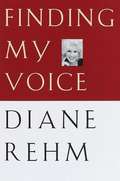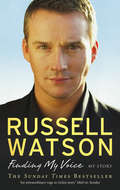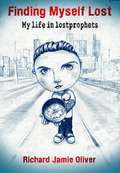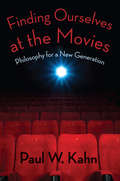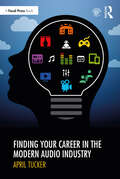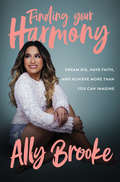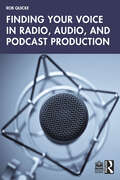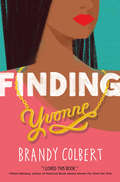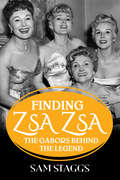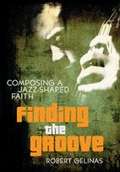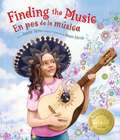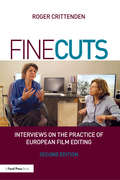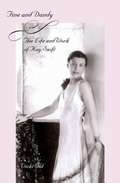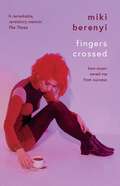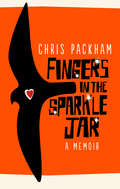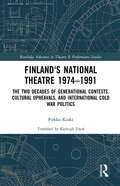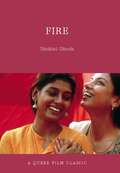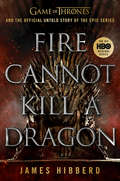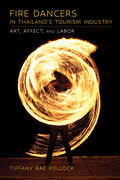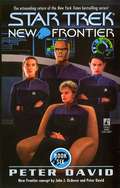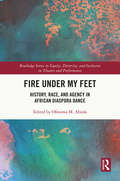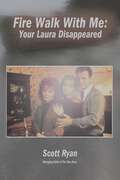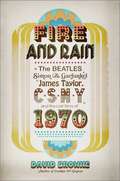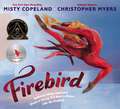- Table View
- List View
Finding My Voice
by Diane RehmIn Finding My Voice, the nationally acclaimed public radio host Diane Rehm tells the story of her remarkable life -- a story in three acts. First, her childhood: She was raised in a traditional Christian Arab household -- her parents were immigrants from the Near East who had a grocery store in Washington, D.C. It was a household dominated by rigor and fear, and Rehm's account of her mother's emotional and physical abuse is chilling. Her young girl's intelligence and energy helped her survive, though the cost to her self-esteem was substantial. After a brief early marriage and divorce, she embarked on a second marriage, to John Rehm -- a marriage rockier than many but one that has endured and flourished, and in which they have happily raised their two children. <p><p> Then, in her thirties, as she found her life as a housewife/mother starting to push her into depression, Rehm began by a stroke of good fortune to volunteer at WAMU-FM, then a small public radio station in Washington, and found that she loved radio and was good at it. She had found her metier. Six years later she had her own show, hosting politicians, artists, writers, musicians, and scientists, including Hillary Clinton, Newt Gingrich, Carl Sagan, Francis Crick, Salman Rushdie, and Norman Mailer, among thousands of others. Twenty years after she began, her talk show is distributed nationally by National Public Radio (NPR) and reaches more than 700,000 listeners each week. Rehm's knowledge of her medium is extensive. Her account of her career is important for what it tells us about the growth of talk radio and about her ability to use that medium to create a straightforward, honest dialogue with her guests and callers throughout the nation. <p> Finally, Finding My Voice recounts Rehm's recent frightening battle with a rare neurological disorder, spasmodic dysphonia (SD), a condition that "creates a strangled hoarseness [and] fills [her] voice with tremors." A radio broadcaster's nightmare, the loss of her voice took her off the air for an extended period of time and into a frantic -- and successful -- search for treatment. As she has with other trials in her life, Rehm has faced this ongoing struggle with fortitude, insight, and pluck. This is a fascinating story by a courageous and resourceful American woman.
Finding My Voice
by Russell WatsonRussell 'The Voice' Watson is a star with a real story to tell. While most stars of today find success early, Russell was still working in a Salford factory at the age of 30. He spent the evenings singing in working men's clubs for extra cash to keep the bailiffs from his family's door. The chairman of Manchester United gave him his big break in May 1999: the opportunity to sing at Old Trafford. His extraordinary performance was quickly followed by a record deal and his phenomenal debut album.Despite his outward success, Russell struggled with his health and family life. His rapid rise to fame led to a bitter divorce from his childhood sweetheart and his private life being splashed across the tabloids. Then last year he was struck down by a life-threatening brain tumour. This plunged Russell into a deep depression and it was only the thought of leaving his two children fatherless that kept him going. Just when it seemed he was fully recovered he collapsed again while recording and had to have emergency surgery on a second brain tumour that threatened his voice, his sight and his life.Now, in his own words, Russell tells us the amazing story of his life.
Finding Myself Lost
by Richard Jamie OliverIn the summer of 2000 Richard Oliver, better known as Jamie, was making a name for himself as an artist and running his own print business. Then one day he announced, 'Hey, Dad, I've decided to join a band.' Following every young man's dream, he bought himself a set of turntables and a week later played his first show with Lostprophets. His friend, the band's lead singer Ian Watkins, asked him to join them in the studio - and soon he was on tour. Told they would never sell more than 4,000 records, the Pontypridd band released their first album to great success. More than a decade and millions of record sales later, Lostprophets continue to be one of the UK's most successful rock bands. With five best-selling albums and numerous awards to their name, they sell-out tours all over the world. In Finding Myself Lost Richard reveals what really goes on behind the scenes on the road, how he has learnt to deal with fame and success and reflects on his own personal growth along the way.
Finding Ourselves at the Movies
by Paul W. KahnAcademic philosophy may have lost its audience, but the traditional subjects of philosophy -- love, death, justice, knowledge, and faith -- remain as compelling as ever. To reach a new generation, Paul W. Kahn argues philosophy must be brought to bear on contemporary discourse surrounding these primal concerns, and he shows how this can be achieved through a turn to popular film.In such well-known movies as Forrest Gump (1994), The American President (1995), The Matrix (1999), Memento (2000), The History of Violence (2005), Gran Torino (2008), The Dark Knight (2008), The Road (2009), and Avatar (2009), Kahn explores powerful archetypes and their hold on us, and he treats our present-day anxieties over justice, love, and faith as signs these traditional imaginative structures have failed. His inquiry proceeds in two parts. First, he uses film to explore the nature of action and interpretation, and narrative, not abstraction, emerges as the critical concept for understanding both. Second, he explores the narratives of politics, family, and faith as they appear in popular films. Engaging with genres as diverse as romantic comedies, slasher films, and pornography, Kahn gains access to the social imaginary, through which we create and maintain a meaningful world.
Finding Ourselves at the Movies: Philosophy for a New Generation
by Paul KahnAcademic philosophy may have lost its audience, but the traditional subjects of philosophy—love, death, justice, knowledge, and faith—remain as compelling as ever. To reach a new generation, Paul W. Kahn argues that philosophy must take up these fundamental concerns as we find them in contemporary culture. He demonstrates how this can be achieved through a turn to popular film.Discussing such well-known movies as Forrest Gump (1994), The American President (1995), The Matrix (1999), Memento (2000), The History of Violence (2005), Gran Torino (2008), The Dark Knight (2008), The Road (2009), and Avatar (2009), Kahn explores powerful archetypes and their hold on us. His inquiry proceeds in two parts. First, he uses film to explore the nature of action and interpretation, arguing that narrative is the critical concept for understanding both. Second, he explores the narratives of politics, family, and faith as they appear in popular films. Engaging with genres as diverse as romantic comedy, slasher film, and pornography, Kahn explores the social imaginary through which we create and maintain a meaningful world. He finds in popular films a new setting for a philosophical inquiry into the timeless themes of sacrifice, innocence, rebirth, law, and love.
Finding Your Career in the Modern Audio Industry
by April TuckerFinding Your Career in the Modern Audio Industry equips the reader with the skills they need to turn an interest in audio, sound, or music technology into a career. This book provides insight for aspiring professionals seeking audio-related opportunities in entertainment, technology, education, and more. In the audio industry, there is typically a gap between those in-training and those with professional (and financially sustainable) careers. This book bridges the information gap, offering practical and real-world advice to those in this volatile stage of their career. Including 70+ interviews with professionals from over 20 countries, Finding Your Career in the Modern Audio Industry offers insight into how others (across the industry and the world) have applied entrepreneurial thinking, problem-solving, and creative solutions to build their careers. Including international case studies and interviews with diverse professionals, Finding Your Career in the Modern Audio Industry is essential reading for anyone taking their first steps into an audio-related field.
Finding Your Harmony: Dream Big, Have Faith, and Achieve More Than You Can Imagine
by Ally BrookeIn this moving and inspirational memoir, singer Ally Brooke recalls her journey to fame, reveals how she has remained true to her beliefs through her most difficult moments. Featuring sixteen pages of never-before-seen photos, Finding Your Harmony takes readers behind-the-scenes of her proudest musical accomplishments, solo success, and her time on Dancing with the Stars.Ally Brooke burst onto the music scene as a member of Fifth Harmony, and quickly became a fan favorite with her infectious positivity and approachable attitude – not to mention her incredible voice. Following the band’s meteoric rise to fame, she embarked on a solo career, releasing her own hit singles, joining the twenty-eighth season of Dancing with the Stars, and showing people everywhere the rewards of hard work and faith.Now in this moving and inspirational memoir, Ally opens up about the experiences that led her to the spotlight, offering lessons from the heart and revealing how her tight-knit, Mexican-American family have helped her to live fearlessly since she was first catapulted into stardom. Tracing her success from its beginnings in San Antonio, Texas, Ally details the passion for music that took hold of her at a young age, and how with the help of her family she pushed herself to achieve her dreams, no matter how impossible they seemed. While her rise to fame was rapid, it wasn’t always smooth, and Ally candidly discusses the challenges she faced along the way, sharing how she navigated tough moments by staying true to herself and her beliefs. Opening up about her journey since Fifth Harmony disbanded, Ally recalls her tireless efforts to make music on her terms, charting back to back singles in the top 40 and amassing over 200 million collective worldwide streams. She also delves into her time on Dancing with the Stars, demonstrating how she conquered her fears and insecurities on her way to a top three finish and further established herself as a role model for young people the world over.Infused with the positive approach to life and spiritual openness that have fueled Ally’s journey, Finding Your Harmony uses her stories to help others follow their inner voices—even when the outside world makes it hard. Wise, grounded, and filled with sixteen pages of never-before-seen photos, Finding Your Harmony is a fascinating glimpse into the life and heart of one of popular music’s rising stars.
Finding Your Voice in Radio, Audio, and Podcast Production
by Rob QuickeThis book provides a unique identity-centered approach to radio, audio, and podcast production which encourages readers to build their confidence and create audio content that matters to them. Written for those just starting out in audio production and focusing on the process of their self-development, readers will learn how to use sound to express themselves in a variety of ways and to create powerful stories in the process – all with the tools already available to them. At the centre of this approach is the author’s R.E.A.L. method, referring to the creation of audio that is relatable, engaging, authentic, and liberating. Students will learn to apply this concept to each step of the production process, from planning and writing through to interviewing, broadcasting, and responding to feedback. By the end of this book readers will have developed a working knowledge of podcast, audio, and radio production alongside their own means of self-expression. Supported by exercises and interviews with audio practitioners throughout, Finding Your Voice in Radio, Audio, and Podcast Production is a key resource for anyone approaching radio, audio, or podcasting for the first time. A supporting companion website with Instructor and Student Resources is available at www.robquicke.com.
Finding Yvonne
by Brandy ColbertFor fans of Nicola Yoon and Nina LaCour comes a striking novel about difficult choices from acclaimed author Brandy Colbert.Since she was seven years old, Yvonne has had her trusted violin to keep her company, especially in those lonely days after her mother walked out on their family. But with graduation just around the corner, she is forced to face the hard truth that she just might not be good enough to attend a conservatory after high school.Full of doubt about her future, and increasingly frustrated by her strained relationship with her successful but emotionally closed-off father, Yvonne meets a street musician and fellow violinist who understands her struggle. He's mysterious, charming, and different from Warren, the familiar and reliable boy who has her heart. But when Yvonne becomes unexpectedly pregnant, she has to make the most difficult decision yet about her future.From the author of Pointe and Little & Lion, comes another heartfelt novel about the twists and turns that can show up on a path meant only for you.
Finding Zsa Zsa: The Gabors behind the Legend
by Sam StaggsFor decades, the Gabor dynasty was the epitome of glamour and fairy tale success. But as biographer, film historian, and Gabor family friend Sam Staggs reveals, behind the headlines is a true story more dramatic, fabulous, and surprising than their self-styled legend would have you believe . . . In 1945, after barely escaping Hitler&’s invasion of Hungary followed by &“liberation&” of the country by the Red Army, three members of the Gabor family—Jolie, her ex-husband Vilmos, and their daughter Magda—arrived in New York City. In Hollywood, their other daughters, Zsa Zsa and Eva, had worked feverishly throughout the war years to secure their rescue from the Nazis&’ plan to exterminate the Jews. Stepping off the boat, Jolie, the iron-willed matriarch, already had a golden future mapped out for her sharp-witted, cosmopolitan beauties. Over the next six decades, with twenty-three husbands between them (suave All About Eve star George Sanders would wed both Zsa Zsa and Magda), scores of lovers, and roller-coaster rides in film, television, theater, and business, the elegant yet gloriously bawdy, addictively watchable Gabors carved a niche in the entertainment industry that made them world-famous pop-culture icons. But beneath the artifice of Dior and diamonds was another side to the story they never revealed: the whole truth. This first verifiable history of the Gabors casts a startling new light on these extraordinary women. Finding Zsa Zsa reveals the tumultuous and often unforgiven battles between mother and daughter, sister and sister, wife and husband; Eva&’s &“bearded&” romance with Merv Griffin that allowed them both to seek same-sex lovers; Zsa Zsa's involuntary confinement in a mental hospital; her life-long struggle with bipolar disorder; and her last—unconsummated—marriage to the manipulating faux prince Frederic von Anhalt. Here too is the untold story of Zsa Zsa&’s daughter, Francesca Hilton, a gifted photographer who eschewed the Gabor lifestyle and paid a sad price for her independence. The story of family patriarch Vilmos Gabor, who returned to Hungary only to be trapped behind the Iron Curtain, reads like a Cold War spy thriller. Culled from new interviews with family, colleagues, and confidantes, and the unpublished memoirs of the author's friend Francesca Hilton, Finding Zsa Zsa finally introduces fans to the Gabor family they never knew, including many never-before-seen photos. It&’s a riveting, outrageously funny, bittersweet, and affectionately honest read of four women who were vulnerable, tough, charitable, endlessly fascinating, and always glamorous to a fault.
Finding the Groove: Composing a Jazz-shaped Faith
by Robert Gelinas'A jazz-shaped faith ... balances freedom with boundaries, the individual with the group, and traditions with the pursuit of what might be. I have discovered in jazz a way of thinking, living, communicating---a way of being ... a groove.' You don't have to be a jazz musician, or even a jazz connoisseur, for this book to speak to you. If you love God and his Word, and if you've longed to follow Jesus Christ outside the slick corporate structures that some American churches erect, this book is for you. If you want to discover a freer, more genuine expression of Christianity, Finding the Groove will be music to your ears, your heart, and your mind. Using brilliant metaphors from the world of jazz, Robert Gelinas reveals breathtaking possibilities for the body of Christ. What might a 'jazz-shaped faith' look like---and how could it help us fulfill the message of the gospel in a way no method, movement, or structured program ever could? How can understanding the beauty of jazz help you better understand Jesus, his vision for those who follow him, and his heartbeat for a world that is badly out of sync? But this book isn't about music. It is about a passionate, biblical, fully integrated way of looking at life and salvation that will free you to find your own unique groove in the kingdom of God.
Finding the Music / En pos de la música
by Jennifer TorresBilingual English/Spanish. In this cheerful book, a determined Latina girl accidentally breaks her grandfather's vihuela and ventures into her community to find someone who can fix the instrument, leading her to discover his legacy as a mariachi player.When Reyna accidentally breaks Abuelito's vihuela-a small guitar-like instrument-she ventures out into the neighborhood determined to find someone who can help her repair it. No one can fix the vihuela, but along the way Reyna gathers stories and mementos of Abuelito and his music. Still determined, Reyna visits the music store, where the owner gives her a recording of Abuelito's music and promises that they can fix the vihuela together. Reyna realizes how much she's learned about Abuelito, his influence in the community, and the power of his music. She returns to her family's restaurant to share Abuelito's gifts with Mama and is happier still finally to hear the sweet sounds of Abuelito's music for herself. With lively illustrations by Renato Alarcão, the tradition of mariachi music comes to life in this bilingual story. Winner of Lee & Low's New Voices Award, Finding the Music is a heartwarming tale of family, community, and the music that brings them all together.
Fine Cuts: The Art Of European Film Editing
by Roger CrittendenIn the expanded second edition of Fine Cuts, Roger Crittenden reveals the experiences of the greatest European film editors through his warm and perceptive interviews. This new edition builds on the foundations laid out in 2005, including interviews with the editors of films such as Day for Night, The Sacrifice, The Kid with a Bike, and Fanny and Alexander; new interviews with editors of such films as Tyrannosaur and The Other Side of Hope; and editors from a wider range of countries, including Austria, Belgium, Finland, Portugal, and Russia. The book now embraces all aspects of post-production, with insights into sound editing from Larry Sider, originator of the renowned School of Sound, and music composition from Oscar winner Dario Marianelli (Atonement). Editors relate their experiences with directors including: Claire Atherton [Chantal Akerman] Mick Audsley [Terry Gilliam, Stephen Frears] Yann Dedet [François Truffaut, Claire Denis, Maurice Pialat] Marie-Hélène Dozo [Dardenne Brothers] François Gédigier [Patrice Chéreau, Lars von Trier] Samu Heikkilä [Aki Kaurismäki] Sylvia Ingemarsdotter [Ingmar Bergman] Tony Lawson [Nicolas Roeg, Stanley Kubrick, Neil Jordan] Michal Leszczylowski [Andrei Tarkovsky, Lukas Moodysson] Roberto Perpignani [Orson Welles, Bernardo Bertolucci, Tavianni Brothers] Mary Stephen [Éric Rohmer] Each interview also includes a list of cited and notable films for further study. An online eResource contains additional interviews with editors Sabine Mamou, Agnès Guillemot, and Nino Baragli.
Fine and Dandy: The Life and Work of Kay Swift
by Vicki OhlKay Swift (1897-1993) was one of the few women composers active on Broadway in the first half of the twentieth century. Best known as George Gershwin's assistant, musical adviser, and intimate friend, Swift was in fact an accomplished musician herself, a pianist and composer whose Fine and Dandy (1930) was the first complete Broadway musical written by a woman. This book - the first biography of Swift - discusses her music and her extraordinary life. Vicki Ohl describes Swift's work for musical theater, the ballet, Radio City Music Hall's Rockettes, and commercial shows. She also tells how Swift served as director of light music for the 1939 World's Fair, eloped with a cowboy from the rodeo at the fair, and abandoned her native New York for Oregon, later fashioning her experiences into an autobiographical novel, Who Could Ask for Anything More? Informed by material, including Swift's unpublished memoirs and extensive interviews with her family members and friends, this book captures the essence and spirit of a remarkable woman. --BOOK JACKET. Title Summary field provided by Blackwell North America, Inc. All Rights Reserved
Fingers Crossed: How Music Saved Me From Success
by Miki BerenyiThe Shoegaze Story of a Britpop Star#1 New Release in Composer & Musician BiographiesGo behind the curtain of London’s Britpop industry as music icon Miki Berenyi revisits the people and memories that changed her life foreverA rising star in the darkness. Growing up with a dubious family life, Miki never thought that music would be her ticket out of a cycle of neglect, exploitation, and struggling with her mental health. But soon after meeting fellow rock fan Emma Anderson, she found herself going from attending gigs to becoming a member of Lush, the most popular Britpop band in the world. Now she shares all in Fingers Crossed, an incredible confession about how the power of music can bring people together to share an ethereal experience. Featuring honest truths and hopeful reflections, this celebrity memoir will inspire you to find your own triumphs by embracing what you love.Fame, friendship, and life under the spotlight. Lush had become Miki’s sanctuary, but life wasn’t all glitz and glamour. With cutthroat competition, a complicated relationship with Emma, and Lush’s tragic end, she shares how she juggled her private life with her new rock band identity. Miki’s life story will captivate you and prompt you to consider this: you, too, can achieve happiness during difficult times. After all, tribulations create the strongest voices.Inside Fingers Crossed, you’ll also find:What the early indie years of Lush were likeWhy money doesn’t mean prosperityHow Britpop industry pitted female singers and musicians against each otherFinding how artists (and everyone else) can find new meanings after saying goodbyeIf you love music biographies such as The Woman in Me, My Effin’ Life, or Karma, you’ll love Fingers Crossed.
Fingers in the Sparkle Jar: A Memoir
by Chris PackhamVoted the UK’s Favourite Nature BookThe memoir that inspired Chris Packham's BBC documentary, Asperger’s and MeEvery minute was magical, every single thing it did was fascinating and everything it didn't do was equally wondrous, and to be sat there, with a Kestrel, a real live Kestrel, my own real live Kestrel on my wrist! I felt like I'd climbed through a hole in heaven's fence.An introverted, unusual young boy, isolated by his obsessions and a loner at school, Chris Packham only felt at ease in the fields and woods around his suburban home. But when he stole a young Kestrel from its nest, he was about to embark on a friendship that would teach him what it meant to love, and that would change him forever. In his rich, lyrical and emotionally exposing memoir, Chris brings to life his childhood in the 70s, from his bedroom bursting with fox skulls, birds' eggs and sweaty jam jars, to his feral adventures. But pervading his story is the search for freedom, meaning and acceptance in a world that didn’t understand him.Beautifully wrought, this coming-of-age memoir will be unlike any you've ever read.
Finland's National Theatre 1974–1991: The Two Decades of Generational Contests, Cultural Upheavals, and International Cold War Politics (Routledge Advances in Theatre & Performance Studies)
by Pirkko KoskiThis study analyses the Finnish National Theatre’s activities throughout the decades during which the post-war generation with its new societal and theatrical views was rising to power, and during which Europe, divided by the Iron Curtain, was maturing to break the boundaries dividing it. Pirkko Koski summarizes the activities of the Finnish National Theatre as a cultural factor and as a part of the Finnish theatre field during 1970s and 1980s. Alongside this he examines the general requirements, resources and structures for activity, including artists, places, geographical position, performances and the analysis on the societal conditions. This book will be of great interest to scholars and students of European theatre and history.
Fire
by Shohini GhoshA Queer Film Classic: the 1996 film by Indian-born director Deepa Mehta, about the burgeoning relationship between the wives of two brothers; its unprecedented lesbian themes led to riots outside cinemas in India.
Fire Cannot Kill a Dragon: Game of Thrones and the Official Untold Story of the Epic Series
by James HibberdPraise from George R.R. Martin: "James Hibberd covered Game of Thrones from start to finish, and he knows where all the bodies are buried. It's all here, in his oral history of the series: how it began, how it ended, dragons and direwolves, what went on in front of the cameras and what went on behind the scenes, the triumphs and the stumbles, the tough decisions, the forks in the road, the reasons why. Actors, directors, showrunners, producers, executives, even me... Fire Cannot Kill a Dragon has it all, everything you ever wanted to know. Game of Thrones was an amazing ride. Fire Cannot Kill a Dragon is an amazing read.&” The official, definitive oral history of the blockbuster show from Entertainment Weekly&’s James Hibberd. It was supposed to be impossible. George R.R. Martin was a frustrated television writer who created his bestselling A Song of Ice and Fire fantasy novels to be an unfilmable saga bound only by the limits of his vast imagination. Then a pair of first-time TV writers teamed with HBO to try and adapt Martin&’s epic. We&’ve all seen the eight seasons of the Emmy-winning fantasy series that came next. But there is one Game of Thrones tale that has yet to be told: the 13-year behind-the-scenes struggle to pull off this extraordinary phenomenon. In Fire Cannot Kill a Dragon, award-winning Entertainment Weekly writer James Hibberd chronicles the untold and uncensored story of Game of Thrones, from the creative team&’s first meetings to staging the series finale and all the on-camera battles and off-camera struggles in between. The book draws from more than 50 revealing new interviews, rare and stunning photos, and unprecedented access to the producers, cast, and crew who took an impossible idea and made it into the biggest show in the world.
Fire Dancers in Thailand's Tourism Industry: Art, Affect, and Labor
by Tiffany Rae PollockFire Dancers in Thailand's Tourism Industry explores the evolution of fire dancing from informal community jam sessions into the iconic, tourist-oriented performances at beach parties and bars, through a close consideration of the role of affect in the lives of fire dancers in the ever-changing scene. Rather than pursuing the common notion that tourism industries are exploitative enterprises that oppress workers, Tiffany Rae Pollock centers the perspectives of fire artists themselves, who view the industry as simultaneously generative and destructive. Dancers reveal how they employ affect to navigate their lives, art, and labor in this context, showcasing how affect is not only a force that acts on people but also is used and shaped by social actors toward their own ends. Fire Dancers in Thailand's Tourism Industry highlights men as affective laborers, investigating how they manage the eroticization of their identities and the intersections of art and labor in tourist economies. Exploring moments of performance and everyday life, Pollock examines how fire artists reimagine their labor, lives, and communities in Thailand's tourism industry.
Fire On High (Star Trek #6)
by Peter DavidLieutenant Robin Lefler's mother died in a shuttle explosion ten years ago. So is the woman being held prisoner in Thallonian space really her? If it is, what is her connection to the mysterious woman holding a weapon that could doom entire worlds? With the lives of billions at stake, Robin Lefler, Captain Calhoun and the crew of the U.S.S. Excalibur must find the answers before time runs out for them and for the struggling remnants of the once-great Thallonian Empire.
Fire Under My Feet: History, Race, and Agency in African Diaspora Dance (Routledge Series in Equity, Diversity, and Inclusion in Theatre and Performance)
by Ofosuwa M. AbiolaFire Under My Feet seeks to expose the diverse, significant, and often under-researched historical and developmental phenomena revealed by studies in the dance systems of the African Diaspora. In the book, written documentation and diverse methodologies are buttressed by the experiences of those whose lives are built around the practice of African diaspora dance. Replete with original perspectives, this book makes a significant contribution to dance and African diaspora scholarship simultaneously. Most important, it highlights the work of researchers from Ecuador, India, Puerto Rico, the United States, and the United Kingdom, and it exposes under-researched and omitted voices of the African diaspora dance world of the aforesaid locations and Puerto Rico, Columbia, and Trinidad as well. This study showcases a blend of scholars, dance practitioners, and interdisciplinarity, and engages the relationship between African diaspora dance and the fields of history, performance studies, critical race theory, religion, identity, and black agency.
Fire Walk With Me: Your Laura Disappeared
by Scott RyanDavid Lynch expert Scott Ryan takes a deep dive into one of the filmmaker's most controversial works, Twin Peaks: Fire Walk With Me, relying largely on original interviews with cast and creative team members (including Laura Palmer herself, Sheryl Lee) that offer brand-new information and insights into the film."Scott Ryan's heartfelt interest and thoughtful curiosity have created a place where the story of these characters continues to live on and evolve as the decades go by." —Sheryl Lee, actress "Scott Ryan's writing and understanding of my music is unreal." —Angelo Badalamenti, composer of the Fire Walk With Me score In 1990, David Lynch was on top of the world. Wild at Heart won the Palme d'Or at the Cannes Film Festival and Twin Peaks was the hottest show on TV. In 1992, he released Twin Peaks: Fire Walk with Me. It sure is amazing how fast coffee can get cold. The film was not well received, to say the least, by critics or ticket buyers. It seemed like the verdict was in: Twin Peaks was dead and wrapped in plastic. Thirty years later, the film is thought by many to be Lynch&’s masterpiece. The book features brand new interviews with editor Mary Sweeney, Gregg Fienberg, DP Ron Garcia, lead actress Sheryl Lee, and interview clips from Writer Bob Engels, lead actor Ray Wise, and other cast members, as well as Ryan&’s essays covering the different iterations of the script, Angelo Badalamenti&’s superb score, the fandom, and the lore of the The Missing Pieces. The book has a foreword by Entertainment Weekly's Twin Peak Podcast host Jeff Jensen (HBO's Watchmen).
Fire and Rain: The Beatles, Simon and Garfunkel, James Taylor, CSNY, and the Lost Story of 1970
by David BrowneJanuary 1970: the Beatles assemble one more time to put the finishing touches on Let It Be; Crosby, Stills, Nash & Young are wrapping up Déjà Vu; Simon and Garfunkel are unveiling Bridge Over Troubled Water; James Taylor is an upstart singer-songwriter who's just completed Sweet Baby James. Over the course of the next twelve months, their lives--and the world around them--will change irrevocably. Fire and Rain tells the story of four iconic albums of 1970 and the lives, times, and constantly intertwining personal ties of the remarkable artists who made them. Acclaimed journalist David Browne sets these stories against an increasingly chaotic backdrop of events that sent the world spinning throughout that tumultuous year: Kent State, the Apollo 13 debacle, ongoing bombings by radical left-wing groups, the diffusion of the antiwar movement, and much more. Featuring candid interviews with more than 100 luminaries, including some of the artists themselves, Browne's vivid narrative tells the incredible story of how--over the course of twelve turbulent months--the '60s effectively ended and the '70s began.
Firebird
by Christopher Myers Misty Copeland<p>In her debut picture book, Misty Copeland tells the story of a young girl--an every girl--whose confidence is fragile and who is questioning her own ability to reach the heights that Misty has reached. Misty encourages this young girl's faith in herself and shows her exactly how, through hard work and dedication, she too can become Firebird. <p>Lyrical and affecting text paired with bold, striking illustrations that are some of Caldecott Honoree Christopher Myers's best work, makes Firebird perfect for aspiring ballerinas everywhere.</p>
